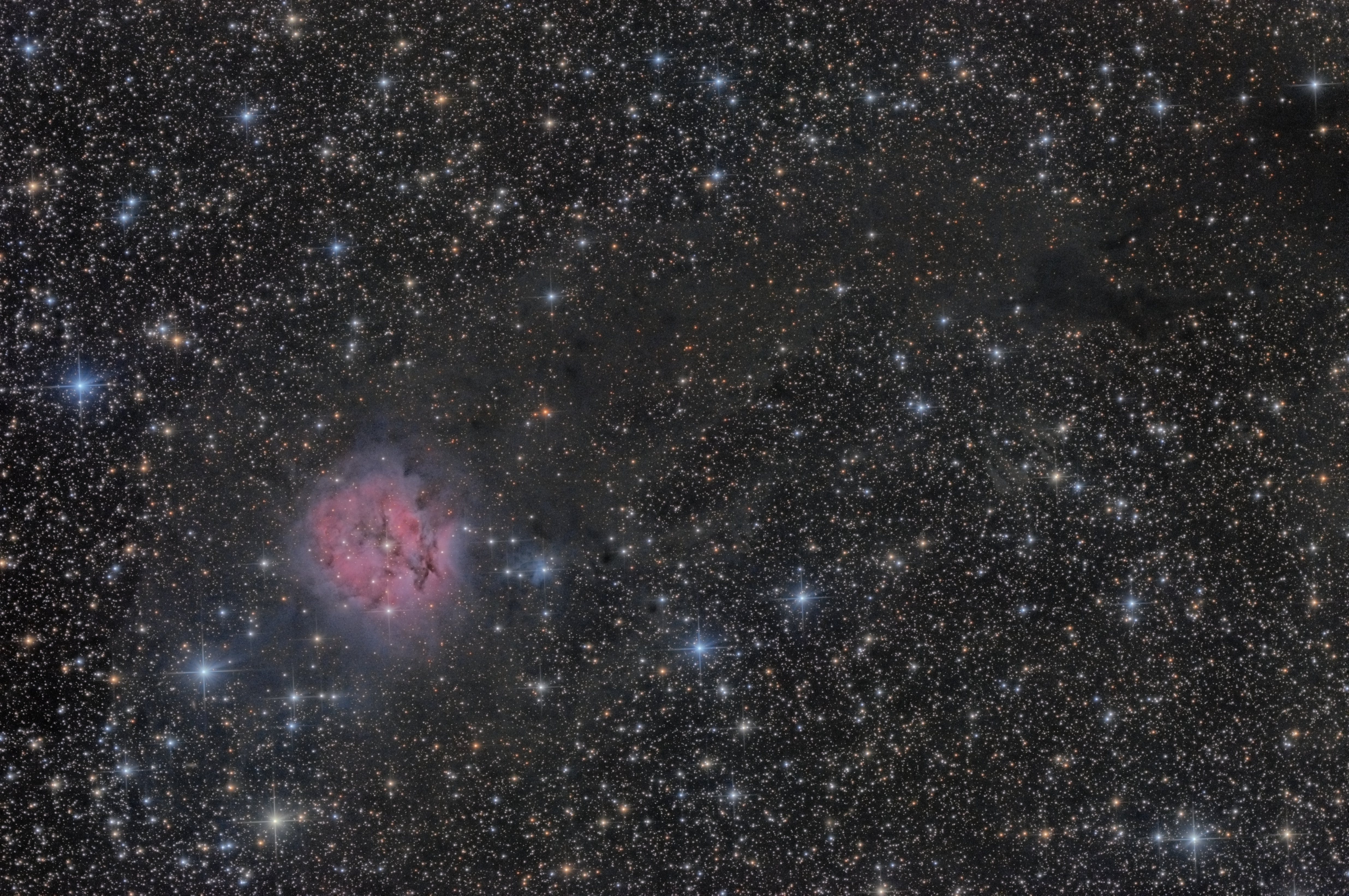
This photo was taken this past new moon in October 2020, and comprises of four hours worth of exposures. The cocoon nebula is the red emissions nebula and contains a small star cluster that’s forming in the middle. Surrounding the nebula is a dense molecular cloud of dust some of which reflects the blue glowing light of a bright nearby star.
8in f4.9 Newtonian Cooled Color Camera Bortle 4 skies 60x4min
In this crop one can get a closer look at the emission nebula, the young star cluster that has formed within as well as the blue reflection nebula to the left.
Follow Me on Instagram | Astrobin | DarkFlats
Equipment:
Orion 8in F4.9 1000mm Newtonian Reflector
- Flocked / Primary mirror replaced due to turned-down-edge
Sky-Watcher F4 Aplanatic Coma Corrector
Astronomik’s L3 UV/IR Luminance Filter
Orion Atlas Pro
ASI071mc Pro cooled to -15C
ZWO OAG + ZWO EFW
Total integration time: 4hr 00min
All pre-processing and post-processing was done in PixInsight. Full details below.
The resulting image is a combination of the following steps:
Inspected all subs for bad images with Blink, discarding subs containing clouds
Calibrated all subs with their corresponding master flat and master dark and then debayered
Used sub-frame selector to weight all images based on the following weighting
1 |
|
Selected the best sub from sub-frame selector and blink to use as a reference frame for aligning and integration
Integrated with Adaptive Normalization using Generalized ESD Pixel Rejection
[RGB Processing]
Remove unwanted background gradients caused by light pollution
Background Neutralization
Color Calibration
Additional Background Extraction
Even Working Space for all channels
Noise Reduction using TGV
Restore Color of saturated stars
ArcSinh Stretch
Masked Stretch
Clip the Tail of the RGB histogram
Reduce stars with a contours based star mask
[Luminance Processing]
A synthetic Luminance was created after the previous color calibration and setting the RGB Working Space previously mentioned
Sharpen the Details using MMT and a mask
Noise Reduction was done using TGVDenoise with a low contrast mask and an auto-stretched local support, SCNR to remove the green overcast and MMT with a very protective luminance mask as documented by Jon Rista
Initial Stretch using Masked Stretch
Bring the tail of the black point
Additional Stretch using Masked Stretch
Local Histogram Equalization
Reduce stars with a contours based star mask
[Combination and Final Adjustments]
Luminance was combined with RGB using LRGBCombination
Enhance the blue reflection nebulas using a blue chrominance mask and curves, re-applying luminance after adjusting
Enhance the Red Emission nebula using a red chrominance mask and Local Histogram Equalization
Further reduce stars using a new contours based mask and morphological transformation
Sharpen star cores using deconvolution and a star mask
Curves to adjust the overall color tones
Additional noise reduction in the dark nebula regions
Further Sharpen star cores using Unsharp Mask and a star mask
Additional Local Histogram Equalization on the Red emission nebula
Final Curves adjustment to adjust tones
An ICC Profile was applied to enable Black Point Compensation
Constructive criticism is welcome. Let me know what you think! How can I improve?